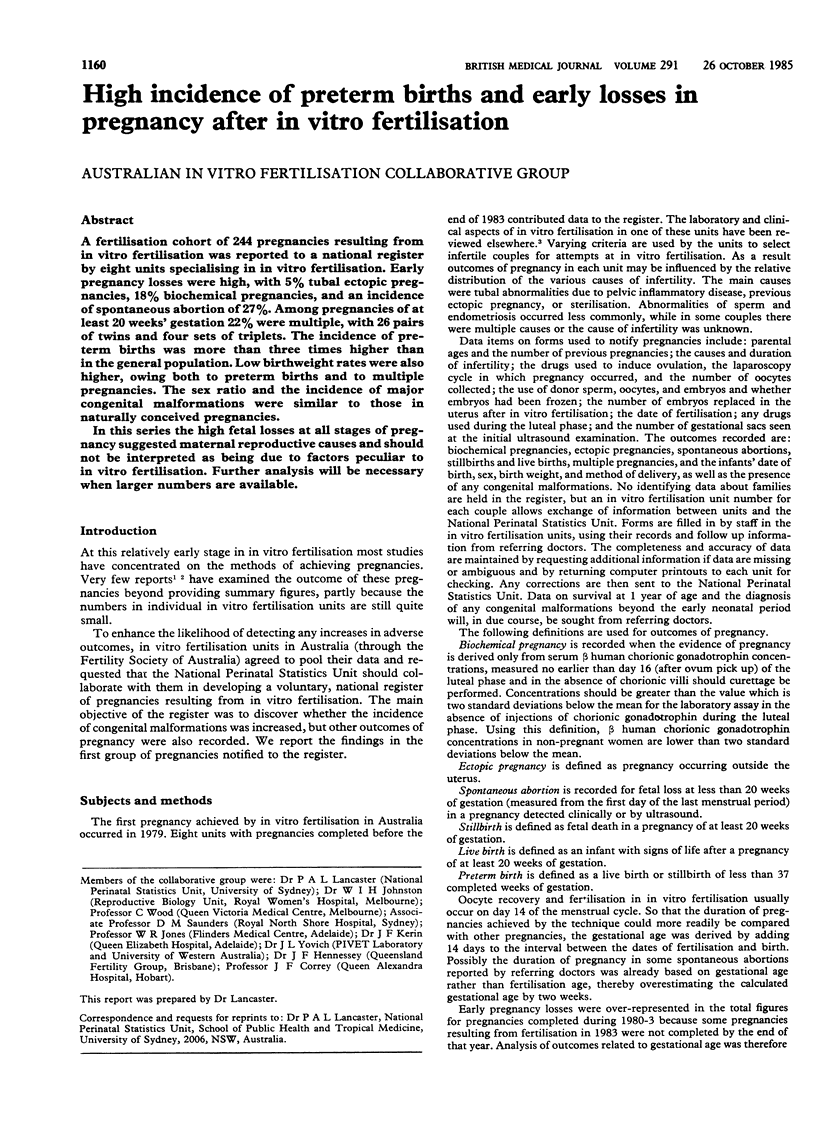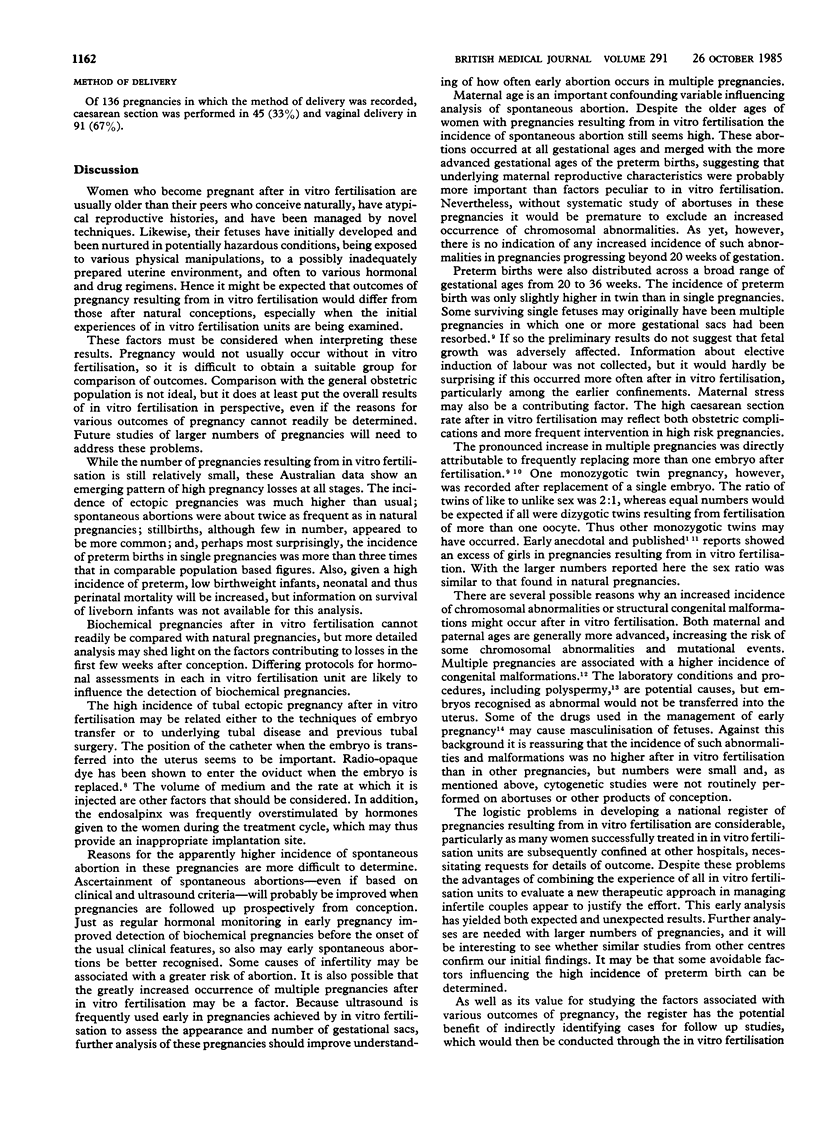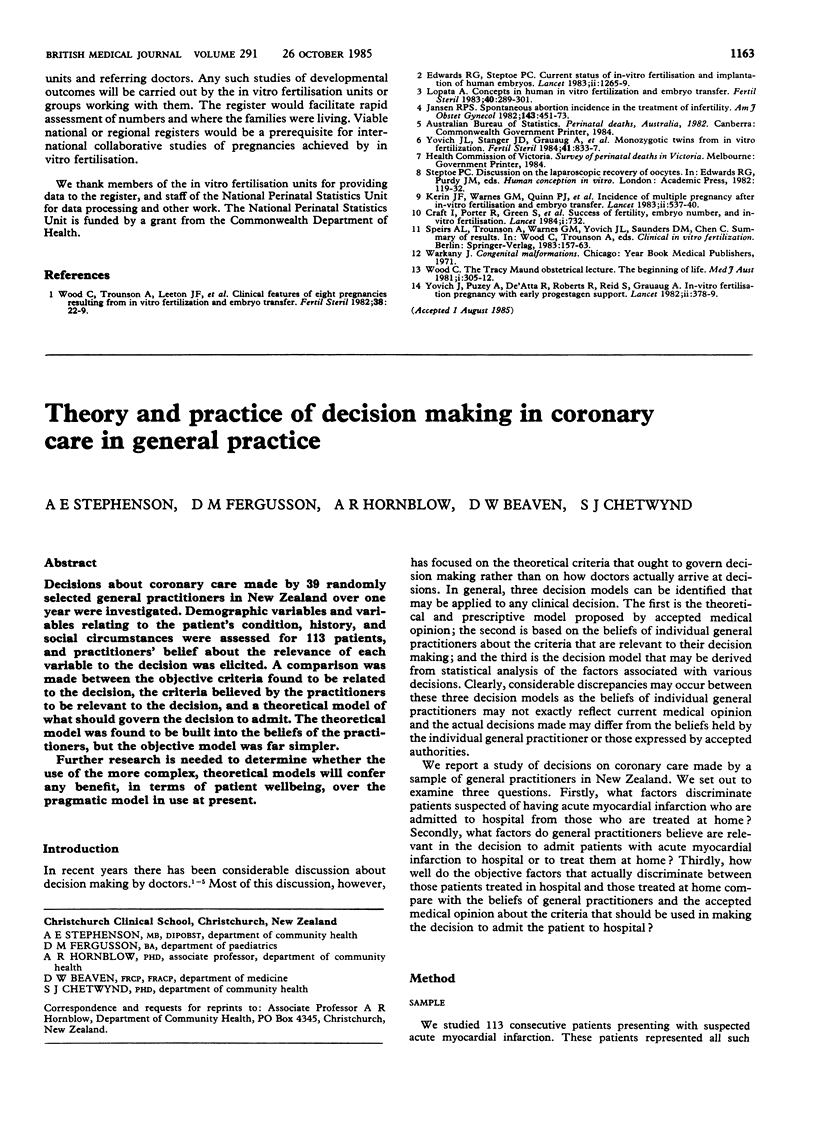Abstract
A fertilisation cohort of 244 pregnancies resulting from in vitro fertilisation was reported to a national register by eight units specialising in in vitro fertilisation. Early pregnancy losses were high, with 5% tubal ectopic pregnancies, 18% biochemical pregnancies, and an incidence of spontaneous abortion of 27%. Among pregnancies of at least 20 weeks' gestation 22% were multiple, with 26 pairs of twins and four sets of triplets. The incidence of preterm births was more than three times higher than in the general population. Low birthweight rates were also higher, owing both to preterm births and to multiple pregnancies. The sex ratio and the incidence of major congenital malformations were similar to those in naturally conceived pregnancies. In this series the high fetal losses at all stages of pregnancy suggested maternal reproductive causes and should not be interpreted as being due to factors peculiar to in vitro fertilisation. Further analysis will be necessary when larger numbers are available.
Full text
PDF



Selected References
These references are in PubMed. This may not be the complete list of references from this article.
- Craft I., Porter R., Green S., Tucker M., Smith B., Twigg H., Ahuja K., Whittingham D. Success of fertility, embryo number, and in-vitro fertilisation. Lancet. 1984 Mar 31;1(8379):732–732. doi: 10.1016/s0140-6736(84)92241-4. [DOI] [PubMed] [Google Scholar]
- Edwards R. G., Steptoe P. C. Current status of in-vitro fertilisation and implantation of human embryos. Lancet. 1983 Dec 3;2(8362):1265–1269. doi: 10.1016/s0140-6736(83)91148-0. [DOI] [PubMed] [Google Scholar]
- Jansen R. P. Spontaneous abortion incidence in the treatment of infertility. Am J Obstet Gynecol. 1982 Jun 15;143(4):451–473. doi: 10.1016/0002-9378(82)90089-8. [DOI] [PubMed] [Google Scholar]
- Kerin J. F., Warnes G. M., Quinn P. J., Jeffrey R., Kirby C., Matthews C. D., Seamark R. F., Cox L. W. Incidence of multiple pregnancy after in-vitro fertilisation and embryo transfer. Lancet. 1983 Sep 3;2(8349):537–540. doi: 10.1016/s0140-6736(83)90569-x. [DOI] [PubMed] [Google Scholar]
- Lopata A. Concepts in human in vitro fertilization and embryo transfer. Fertil Steril. 1983 Sep;40(3):289–301. doi: 10.1016/s0015-0282(16)47289-4. [DOI] [PubMed] [Google Scholar]
- Wood C. The Tracy Maund Obstetrical Lecture. The beginning of life. Med J Aust. 1981 Mar 21;1(6):305–312. [PubMed] [Google Scholar]
- Wood C., Trounson A., Leeton J. F., Renou P. M., Walters W. A., Buttery B. W., Grimwade J. C., Spensley J. C., Yu V. Y. Clinical features of eight pregnancies resulting from in vitro fertilization and embryo transfer. Fertil Steril. 1982 Jul;38(1):22–29. doi: 10.1016/s0015-0282(16)46391-0. [DOI] [PubMed] [Google Scholar]
- Yovich J. L., Stanger J. D., Grauaug A., Barter R. A., Lunay G., Dawkins R. L., Mulcahy M. T. Monozygotic twins from in vitro fertilization. Fertil Steril. 1984 Jun;41(6):833–837. [PubMed] [Google Scholar]
- Yovich J., Puzey A., de'Atta R., Roberts R., Reid S., Grauaug A. In-vitro fertilisation pregnancy with early progestagen support. Lancet. 1982 Aug 14;2(8294):378–379. doi: 10.1016/s0140-6736(82)90562-1. [DOI] [PubMed] [Google Scholar]


